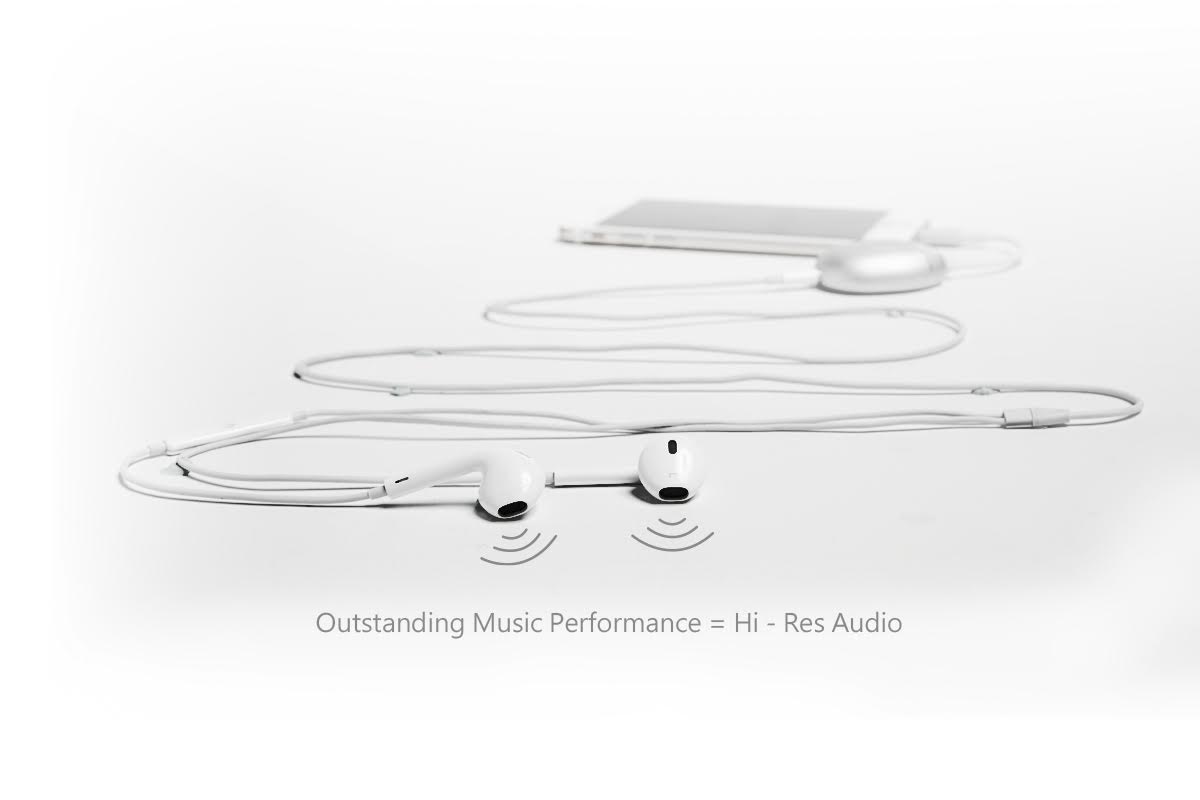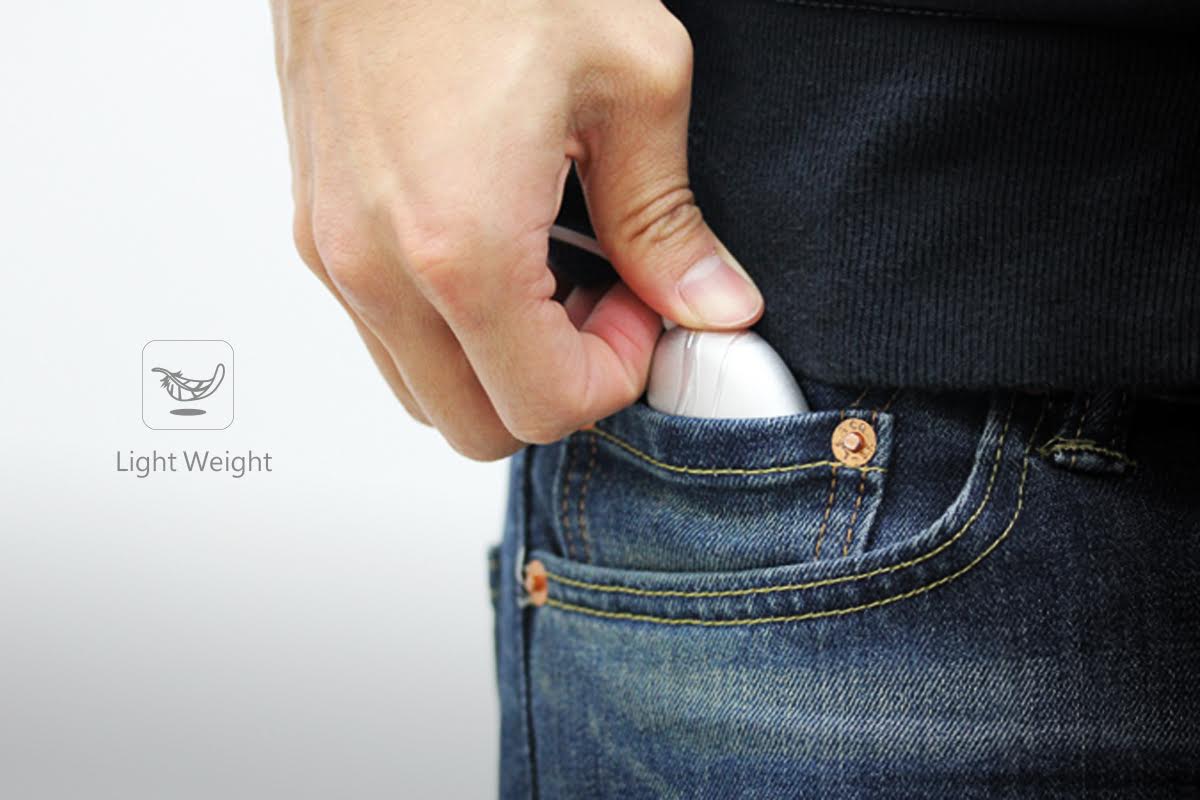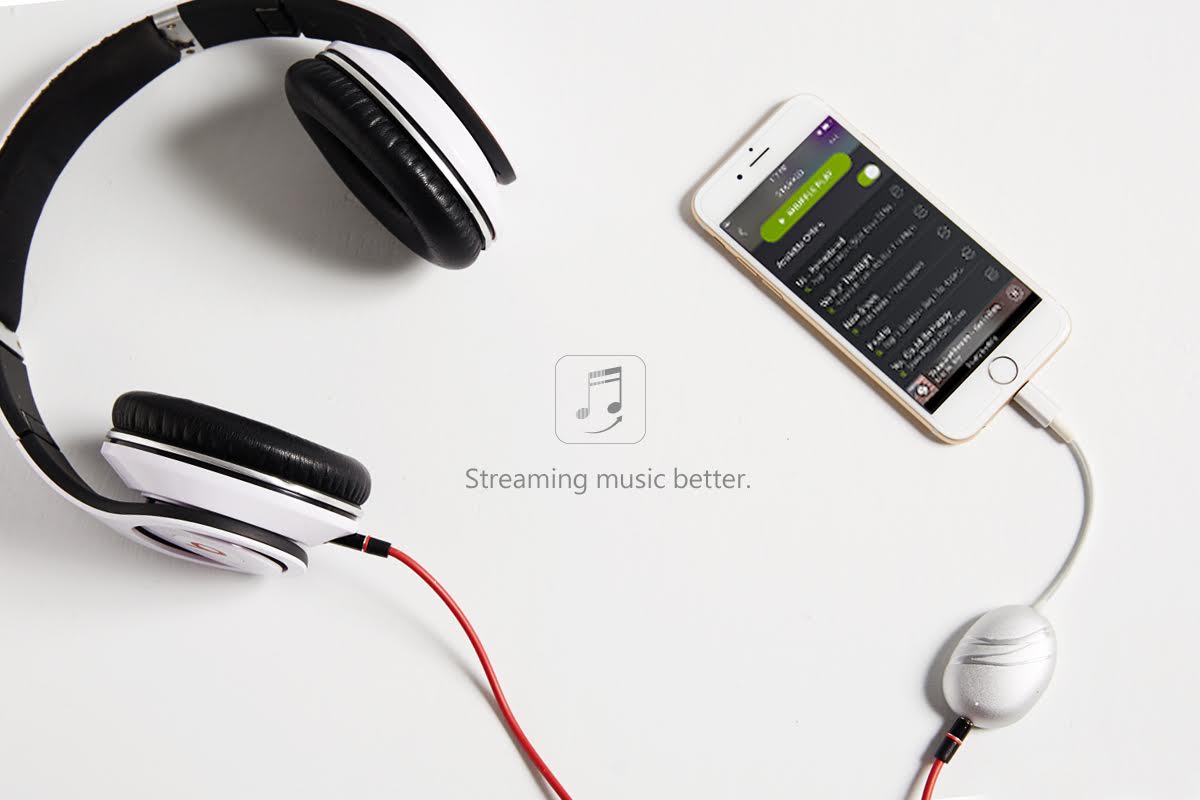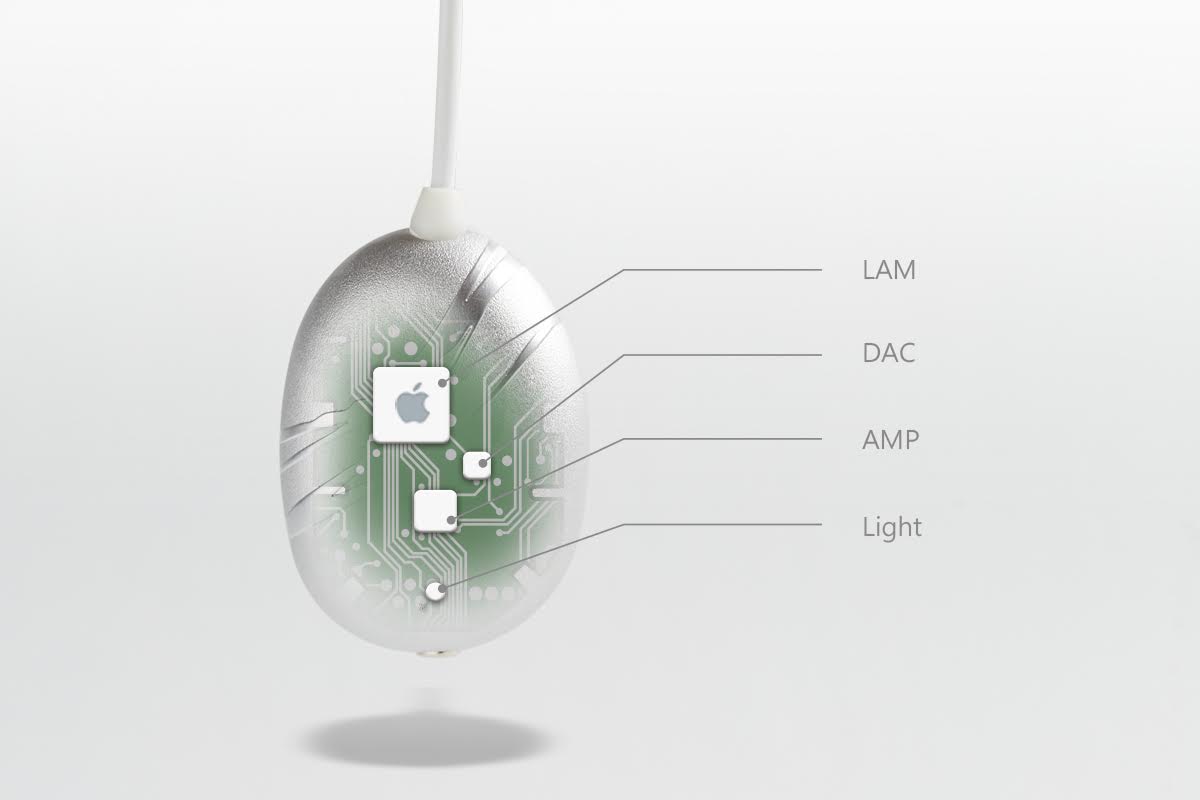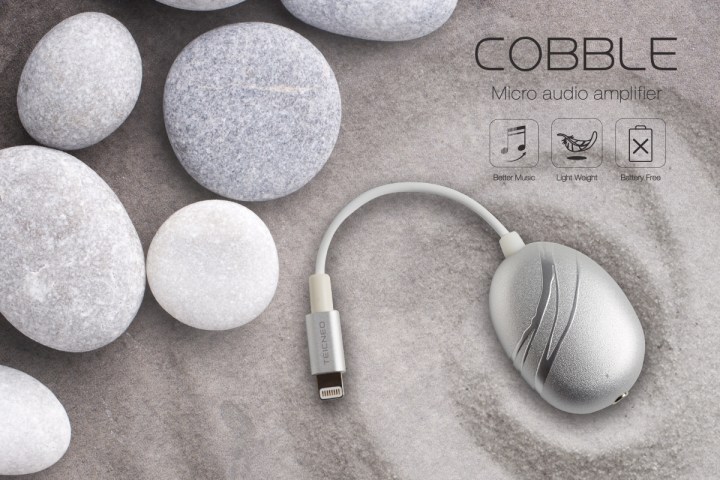
A new product called Pebble (not to be confused with the smart watch) launched on Kickstarter today. It aims to give iPhone, iPad, and iPod users a more enjoyable listening experience by combining a digital-to-analog converter (DAC) and headphone amplifier in one package. We’ve seen these before, but this one aims to be both easier to use and more affordable.
Updated on 03-15-2016 by Kristofer Wouk: Shortly after the campaign launched, Kickstarter was contacted by Pebble (maker of the smart watch) with the request that the product name be changed. Now the project is known as Cobble.
“[Cobble] was created to allow general mobile users to enjoy high resolution music without having to lug around a big and bulky portable amplifier,” a representative told Digital Trends. “Aside from convenience, it is also price friendly, meaning it’s not going to cost you an arm and a leg to enjoy quality sound.”
The Cobble plugs into the Lightning port on your iOS device, and allows 24-bit/48 kHz to 192 kHz playback, meaning that it’s somewhat future-proof. If the rumors are true and future iPhones are released with just a Lightning port instead of a headphone jack, this will work as an alternative to whatever Apple provides for compatibility with standard headphones. Where this really separates itself from other DAC/amp combos is that it’s fully compatible with your earphones, and you can use that mic to control media or take calls, something the team says is a world-first.
While the Cobble team says any headphones will be improved by its device, better
At least at the start, the Cobble will only be available for those using Apple devices. We asked about other devices like PCs and Android devices, but the team said that with so many different devices out there, it’s tougher to offer a seamless experience, so for now it is only focusing on iOS.
Backers of the Kickstarter will be able to get a single Cobble for $70. However, during the campaign’s early stages, early bird pricing is available for a limited number of units — 300 can be had for $60 each, and 100 can be had for $45 each. A limited number of 50 units can be personalized by the backer for just a little more at $80.
The campaign is aiming for a modest goal of $18,000, with a number of stretch goals in place to attempt to push the numbers higher. The campaign kicked off only today, and will come to a close on April 15. Assuming the campaign is funded, rewards are expected to ship as early as June 2016.
For more information, see the Cobble Kickstarter page.
Editors' Recommendations
- One of the most iconic iPhone accessories is back — and it’s great
- iPhone 16: news, rumored price, release date, and more
- 5 phones you should buy instead of the iPhone 15
- iPhone SE 4: news, rumored price, release date, and more
- 3 reasons why I’ll actually use Anker’s new iPhone power bank
